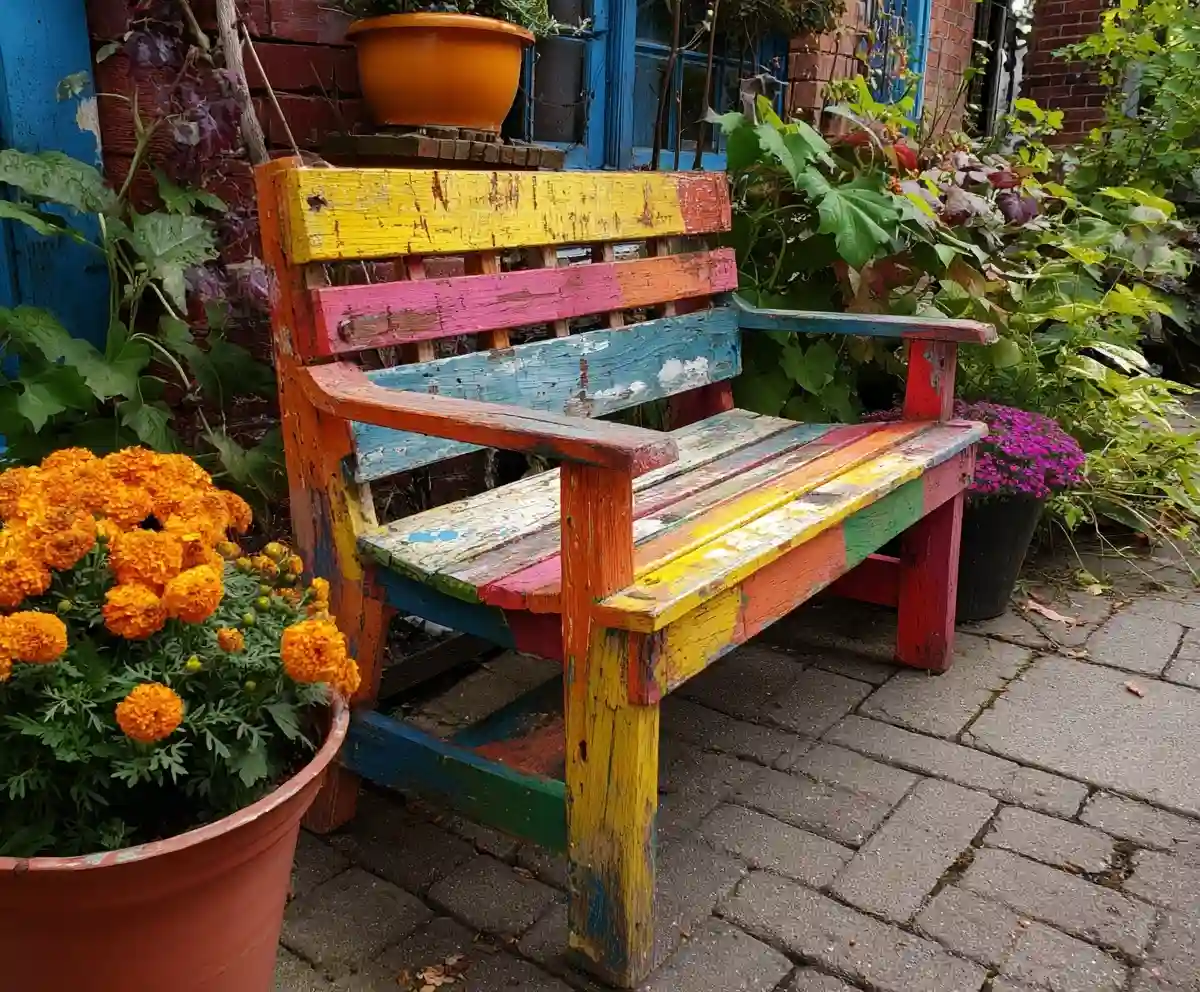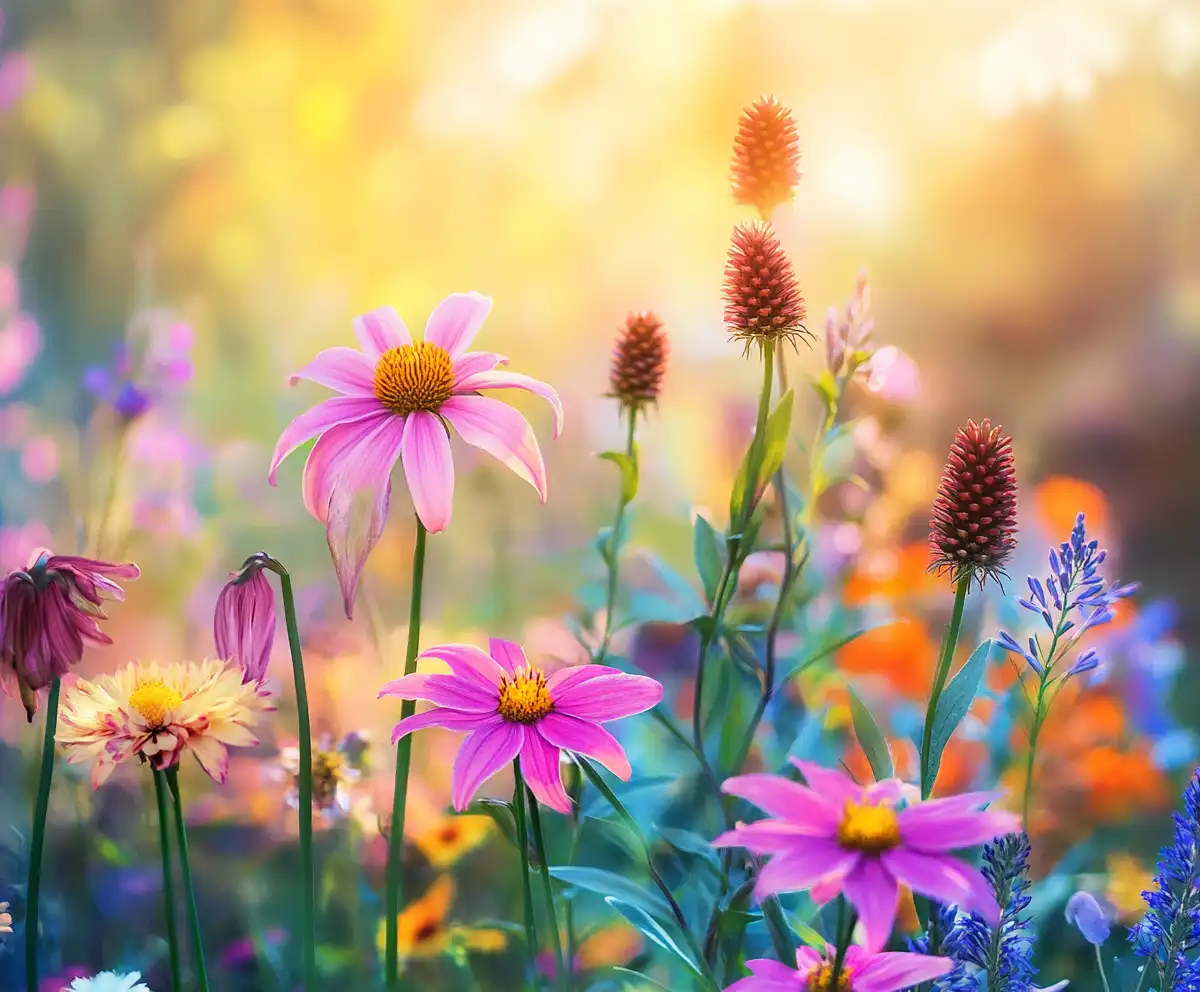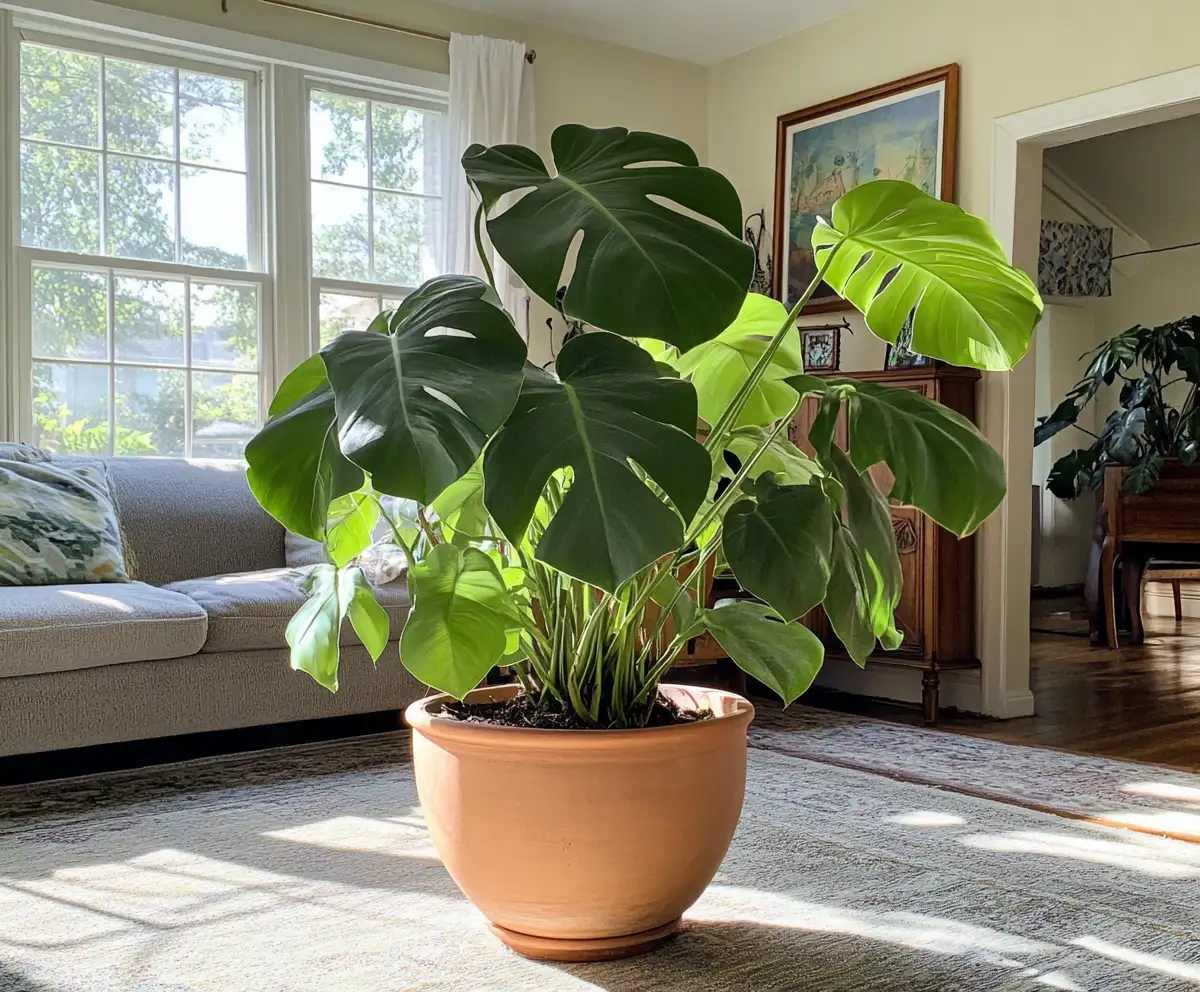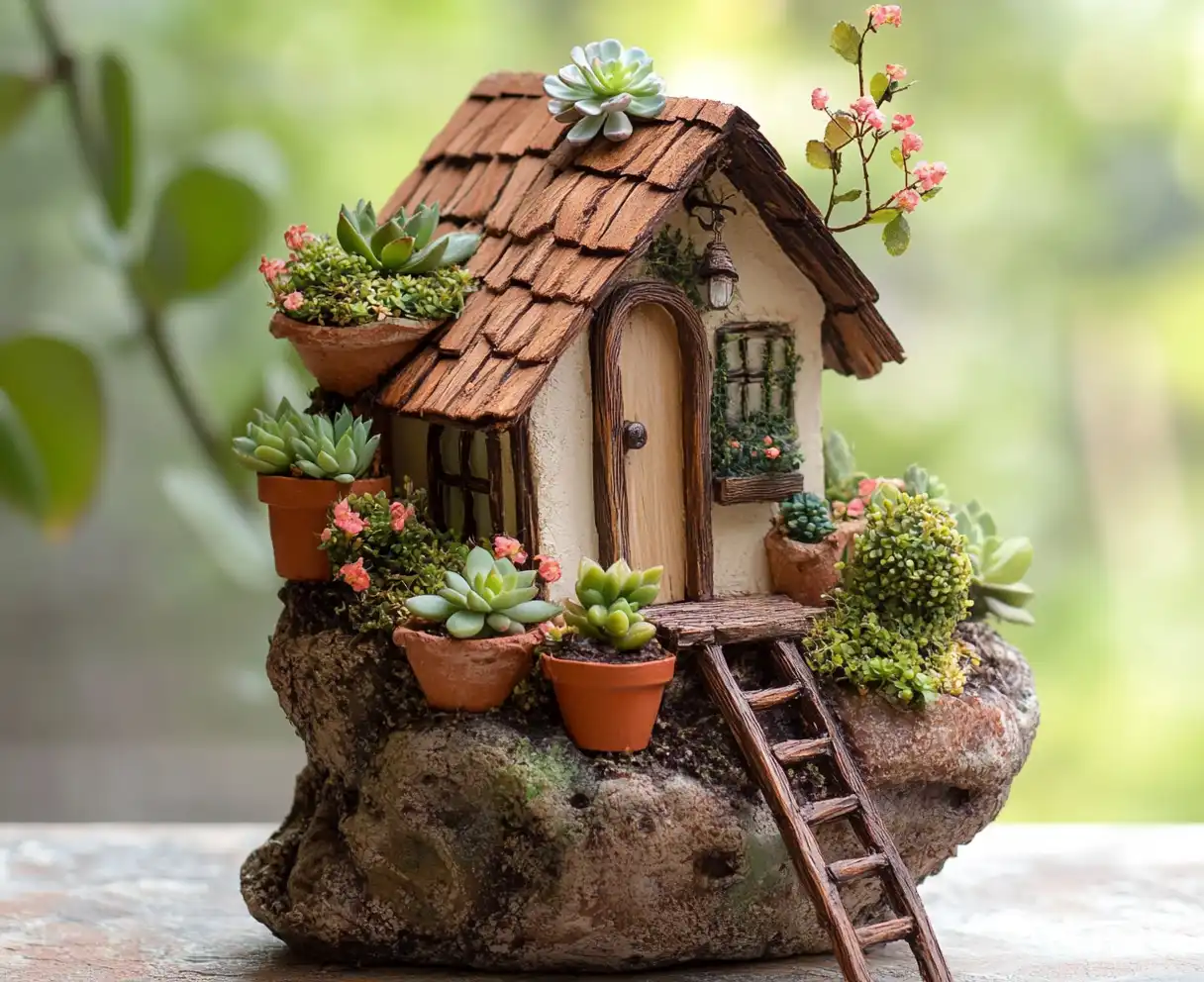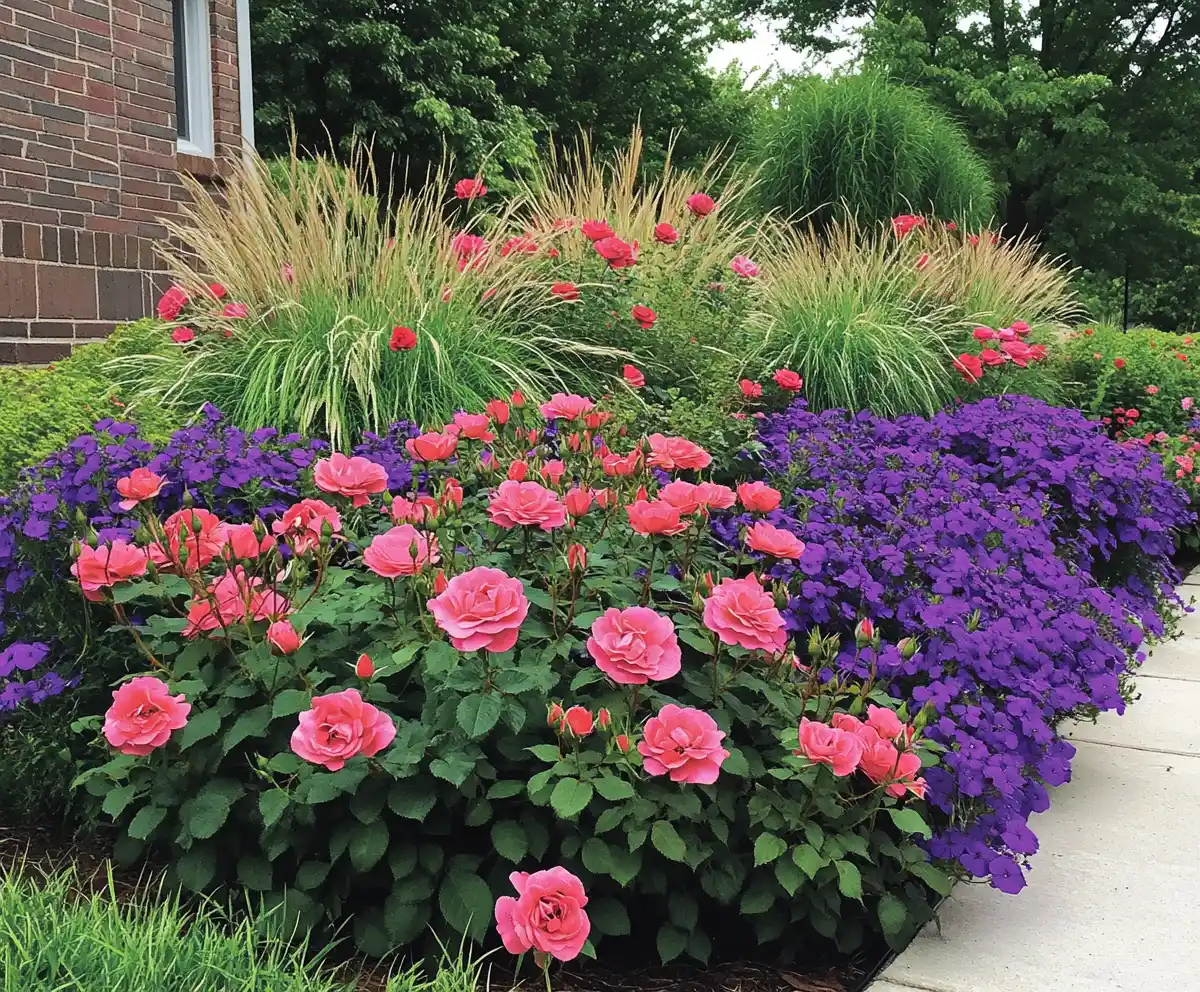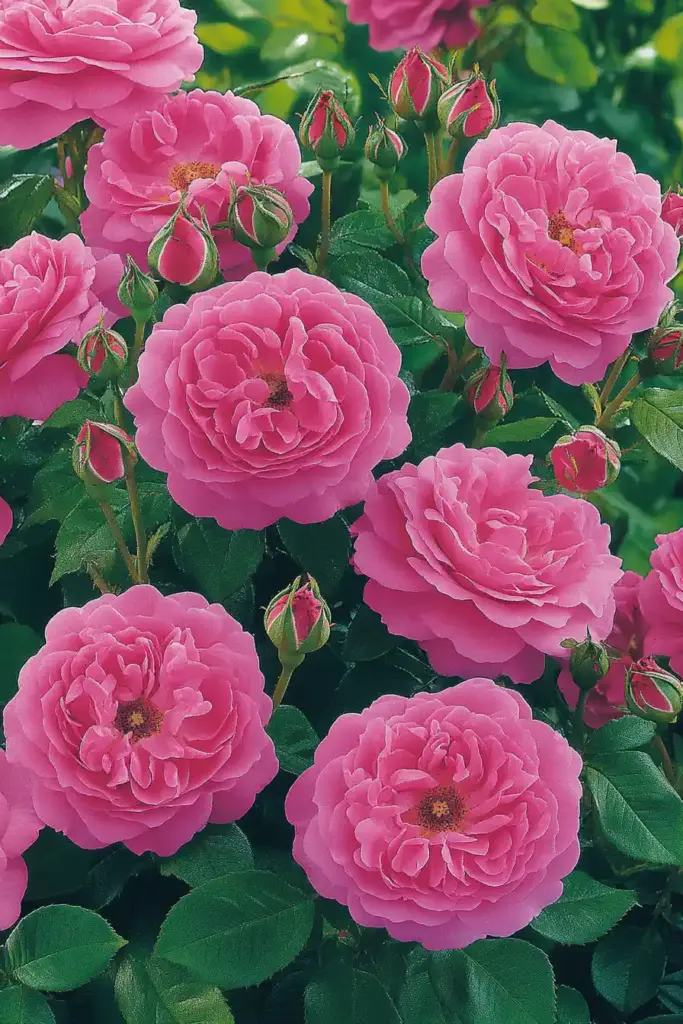A well-tended rose garden is more than just a pretty sight—it’s a fragrant escape, a timeless symbol of love, and a rewarding hobby. While many believe roses are finicky and hard to grow, the truth is that any gardener—beginner or seasoned—can cultivate a thriving rose garden with the right planning and care.
Roses come in all shapes, colors, and sizes, offering endless possibilities for personalizing your landscape. From choosing the right varieties to mastering seasonal maintenance, this guide walks you through the key steps to designing, planting, and nurturing a vibrant rose garden that blooms beautifully year after year.
Whether you dream of a formal English-style rose bed or a free-flowing cottage vibe, your perfect rose garden is within reach—and it starts here.
Table of Contents
🌸 1. Choosing the Right Type of Roses
The foundation of a successful rose garden starts with selecting the right types of roses. Each variety offers unique characteristics—from bloom style and fragrance to growth habit and care needs. Understanding these differences will help you build a garden that not only looks stunning but also thrives in your environment.
🌹 Popular Rose Types to Consider
Here’s a quick guide to the most beloved rose varieties and what makes each one special:
Hybrid Tea Roses
- Known for: Large, classic, high-centered blooms
- Best for: Cutting gardens and bouquets
- Look: Elegant, single blooms on long stems
Floribunda Roses
- Known for: Clusters of flowers that bloom repeatedly
- Best for: Mass planting and borders
- Look: Colorful, continuous bloomers with less fuss
Grandiflora Roses
- Known for: A blend of hybrid tea elegance and floribunda abundance
- Best for: Statement-making garden displays
- Look: Tall, vigorous plants with big, showy flowers
Climbing Roses
- Known for: Long canes perfect for vertical growing
- Best for: Arbors, fences, trellises, and walls
- Look: Romantic and dramatic, ideal for vertical gardens
Shrub Roses
- Known for: Hardiness and bushy, full growth
- Best for: Informal hedges and landscape massing
- Look: Great coverage with a more natural, free-form shape
Groundcover Roses
- Known for: Low-growing, spreading habit
- Best for: Slopes, edges, and erosion control
- Look: Compact plants that blanket the ground with blooms
English (David Austin) Roses
- Known for: Old-world charm with modern re-blooming power
- Best for: Scented gardens and nostalgic garden themes
- Look: Cup-shaped, fragrant blooms with lush foliage
📝 Tip: Mixing several types can add depth and visual interest to your rose garden while extending the blooming season.
🌍 2. Factors to Consider When Selecting Roses
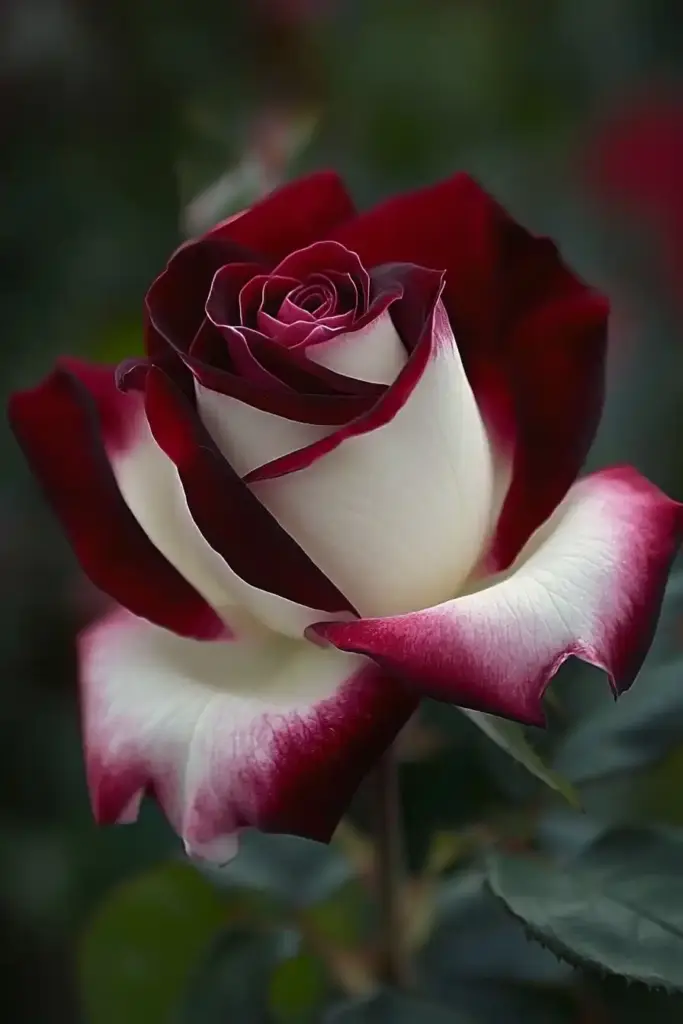
Choosing the perfect roses for your rose garden isn’t just about looks—it’s about finding varieties that will thrive in your specific conditions and meet your garden goals. Here are the key factors to weigh before making your picks:
🌡️ Climate Compatibility
Not all roses are created equal when it comes to temperature tolerance. Make sure you match your roses to your local climate:
- Cold Climates:
- Best picks: Rugosa and Redleaf Roses
- Why: They endure freezing temperatures and harsh winters with grace.
- Hot Climates:
- Best picks: Knock Out series, Brindabella roses
- Why: These roses love the heat and keep blooming through summer scorchers.
👉 Pro Tip: Always check your USDA Hardiness Zone when selecting rose varieties.
🌼 Bloom Cycle
Consider how often you want your roses to flower:
- Once-Blooming Roses:
- Examples: Constance Spry, Veilchenblau
- Ideal for: A spectacular single season of blooms
- Repeat-Blooming Roses:
- Examples: Iceberg, Bonica, Golden Celebration
- Ideal for: Nonstop color from spring through fall
🌸 Fragrance Priority
If scent is a must-have in your garden experience, choose highly fragrant varieties:
- Top choices: Mister Lincoln, Double Delight
- Benefit: Your garden becomes a sensory paradise!
🛡️ Disease Resistance
Reduce maintenance headaches by selecting disease-resistant roses:
- Strong options: Flower Carpet, Carefree Spirit
- Bonus: Less spraying, more enjoying!
🧭 3. Planning the Garden Layout
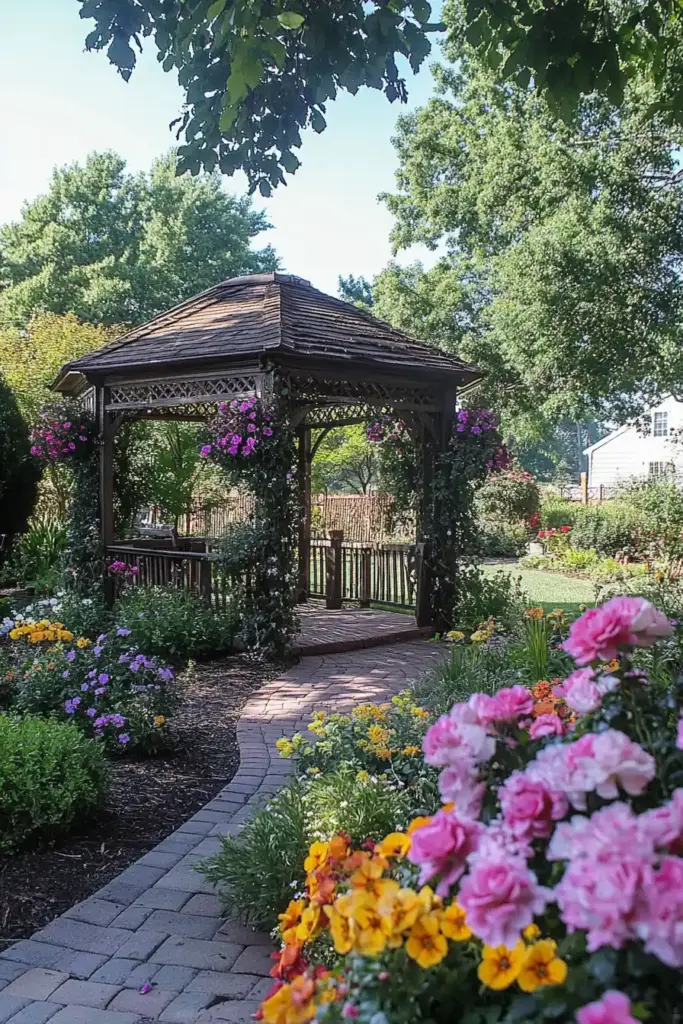
A thoughtfully planned layout can transform a simple rose garden into a breathtaking showcase of color, fragrance, and structure. Proper planning also boosts your roses’ health by ensuring they get the light, airflow, and support they need.
☀️ Sunlight is Key
Roses love the sun—6 to 8 hours of direct sunlight daily is the sweet spot. Without enough light, you’ll see fewer blooms and weaker plants.
Tip: If you have a partially shaded spot, opt for semi-shade tolerant varieties like Eden or Zephirine Drouhin.
📏 Spacing Matters
Giving roses enough room to breathe is crucial for preventing diseases like black spot and powdery mildew.
- Bush Roses: Space 2–3 feet apart
- Climbing Roses: Space 6–10 feet apart to allow vigorous spreading
Good spacing ensures strong airflow and keeps maintenance easier in the long run.
🎨 Choosing Your Garden Style
Your rose garden should reflect your personal taste! Here are some popular styles:
- Formal Beds:
- Neat, symmetrical layouts with roses pruned into tidy shapes
- Cottage Style:
- A relaxed, natural look with roses mingling among perennials and ornamental grasses
- Vertical Gardens:
- Use climbing roses on trellises, pergolas, fences, or walls for dramatic vertical interest
Design Tip: Pair climbing roses with vines like clematis for a layered, romantic effect.
🌿 Companion Planting
Certain plants don’t just look beautiful next to roses—they help them thrive!
- Lavender & Catmint: Repel pests like aphids
- Geraniums: Deter Japanese beetles
- Alliums: Keep aphids at bay while adding striking architectural form
Pairing roses with pest-repelling companions improves biodiversity and reduces your reliance on chemical treatments.
🌱 4. Soil Preparation for a Thriving Rose Garden
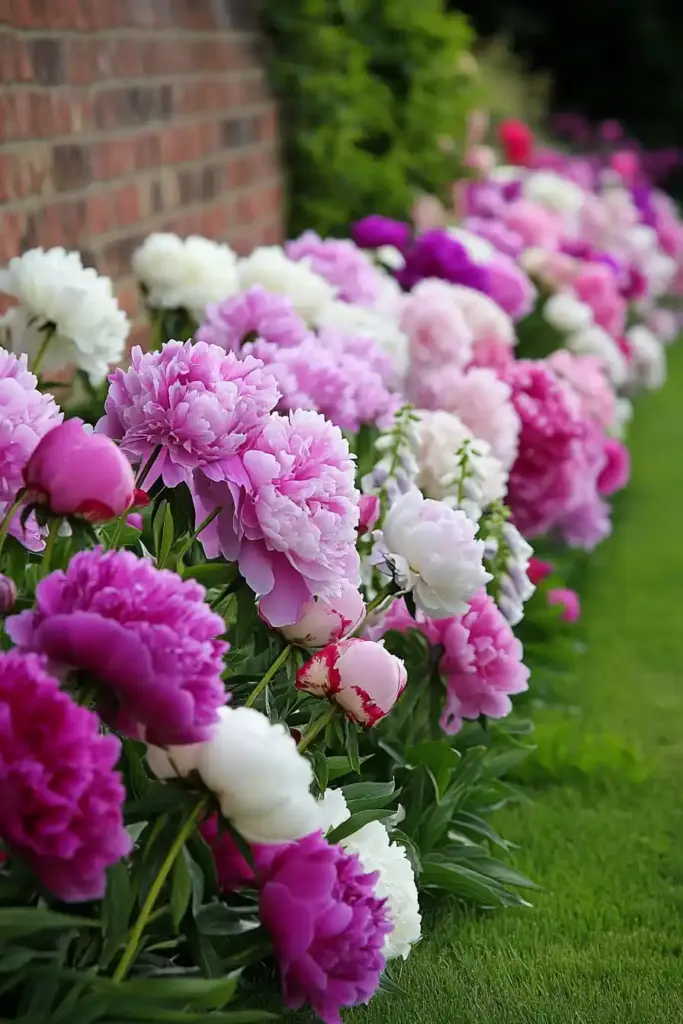
Healthy roses start from the ground up—literally. Preparing your soil properly gives your rose garden the strong foundation it needs for lush, vibrant blooms year after year.
🧪 Test Your Soil First
Before planting, test your soil’s pH and nutrient levels. Roses thrive best in slightly acidic to neutral soil, with a pH between 5.5 and 7.0.
- If soil is too acidic: Add lime to raise the pH.
- If soil is too alkaline: Add sulfur or organic compost to lower the pH.
You can easily find soil test kits online or at garden centers—or get a professional analysis for pinpoint accuracy.
🌾 Amend According to Soil Type
Different soils need different tweaks to create a rose-friendly environment:
- Sandy Soil:
- Problem: Drains too quickly, losing nutrients.
- Solution: Mix in lots of compost, aged manure, or peat moss to boost water retention.
- Clay Soil:
- Problem: Heavy, slow-draining, and prone to root rot.
- Solution: Add coarse sand, perlite, gypsum, and organic matter to break up compacted clay and improve drainage.
Healthy soil should feel crumbly and rich—not sticky or powdery.
🍂 Mulching Magic
Once your soil is prepped and planted, mulching offers multiple benefits:
- Moisture Retention: Reduces evaporation, keeping roots consistently hydrated.
- Weed Suppression: Blocks sunlight to minimize competition.
- Temperature Regulation: Protects roots from extreme heat and cold.
Best mulch choices: Shredded bark, straw, pine needles, or wood chips—laid 2–3 inches deep but kept a few inches away from rose stems to prevent rot.
🌼 5. Planting Roses the Right Way
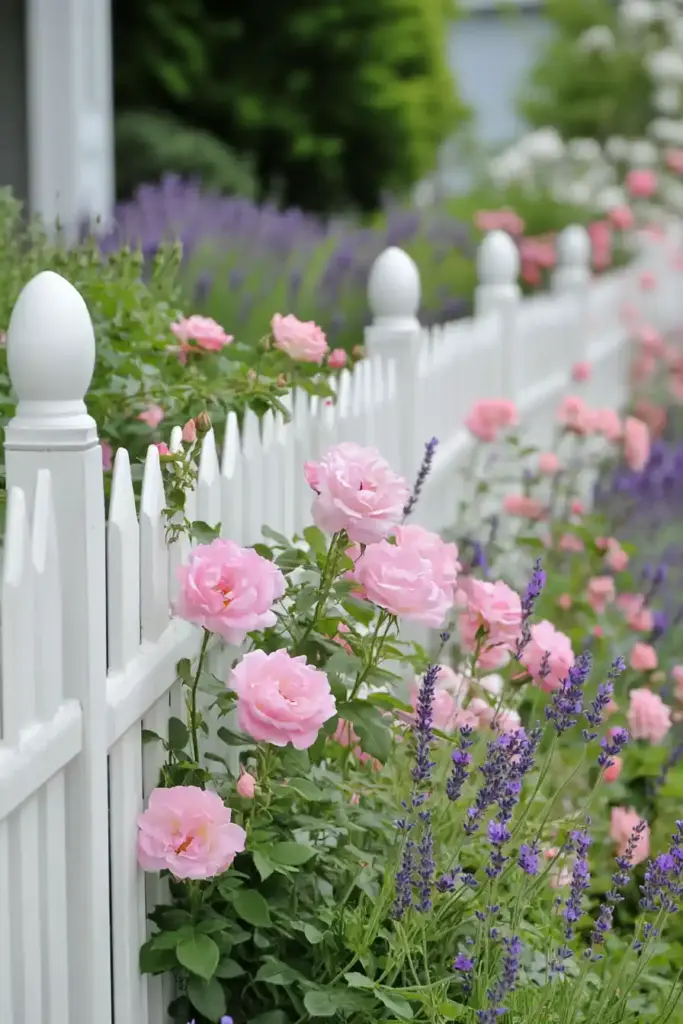
Planting your roses correctly sets the stage for a flourishing, long-lasting rose garden. A little extra care during this step makes a huge difference in your plants’ health and vigor.
🗓️ Best Time to Plant
- Dormant Season:
- Ideal planting time is late winter to early spring, when roses are still asleep but ready to wake up strong.
- In warmer climates:
- You can also plant roses in fall, giving them time to establish roots before the summer heat.
🛠️ Step-by-Step Rose Planting Guide
1. Choose the Perfect Spot
- Full sun (6–8 hours daily)
- Well-drained soil (no standing water after rain)
- Away from large trees or walls that might steal light and nutrients
2. Dig the Right Hole
- Make a hole twice as wide and just as deep as the root ball.
- Loosen the surrounding soil so new roots can easily spread.
3. Prepare the Rose
- Bare-root roses:
- Soak the roots in water for 2–3 hours before planting to rehydrate them.
- Potted roses:
- Gently loosen the root ball with your fingers to encourage outward root growth.
4. Position the Rose
- Cold climates:
- Bury the graft union (the swollen bump near the base) 1–2 inches below the soil surface to protect it from freezing.
- Warm climates:
- Keep the graft union just above the soil line to prevent rot.
Spread the roots naturally (don’t crumple or fold them).
5. Backfill and Water Deeply
- Refill the hole with amended soil.
- Press gently but firmly to remove air pockets.
- Water thoroughly to settle the soil and kick-start root growth.
💡 Quick Planting Tip:
Add a handful of bone meal into the planting hole—it’s a slow-release source of phosphorus that supports strong root development.
💧 6. Watering and Fertilizing Your Roses
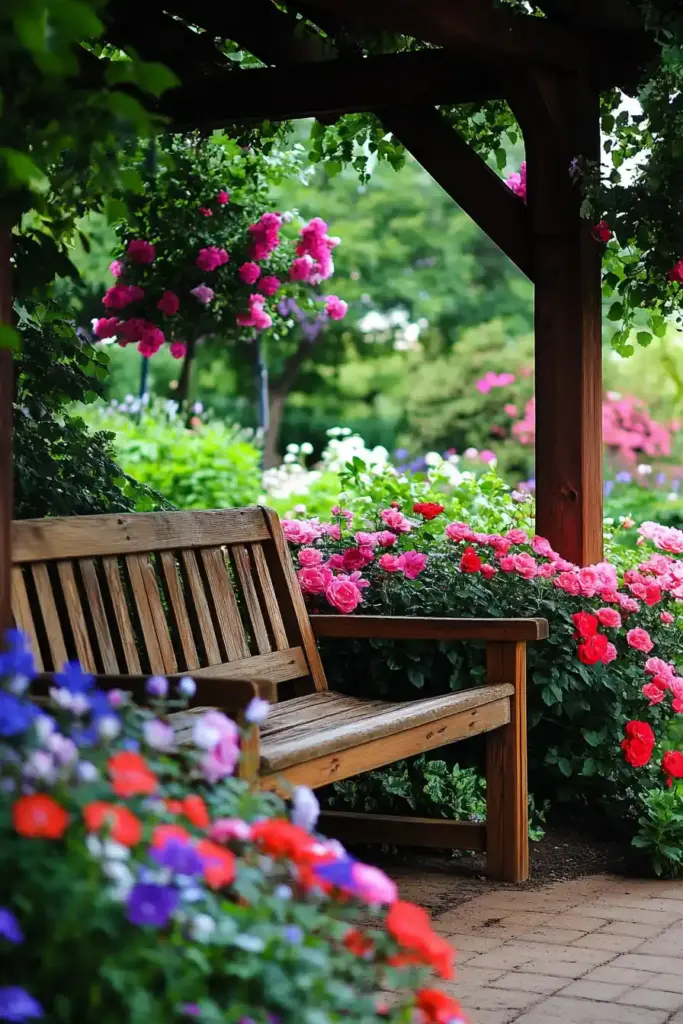
Proper watering and feeding are the lifelines of a healthy, stunning rose garden. A consistent care routine will reward you with lush growth and waves of colorful blooms.
🚿 How to Water Roses Correctly
Roses love deep, thorough watering—not quick sprinkles. Here’s how to do it right:
- Water at the base:
- Keep leaves dry to prevent fungal diseases like black spot and powdery mildew.
- Water deeply:
- Aim to soak the soil to a depth of 10–12 inches.
- Frequency:
- Water once or twice a week during hot, dry periods.
- Timing:
- Water early in the morning so any splashed leaves dry quickly during the day.
Pro Tip: A soaker hose is a rose gardener’s best friend. It delivers steady moisture right to the roots without wetting the foliage.
🌱 How to Fertilize Roses for Maximum Blooms
Regular feeding keeps roses vigorous and flowering continuously. Here’s the strategy:
- Start in early spring when new growth appears.
- Feed every 4–6 weeks through midsummer (stop fertilizing by early fall).
Best Fertilizer Options:
- Organic Choices:
- Compost, aged manure, fish emulsion, or bone meal for slow, natural nourishment.
- Synthetic Choices:
- Use rose-specific granular or liquid fertilizers that offer a balanced nutrient mix (look for N-P-K ratios like 10-10-10 or 5-10-5).
Feeding Tip: After fertilizing, water thoroughly to help nutrients penetrate the soil and reach the roots effectively.
✂️ 7. Pruning and Deadheading Roses
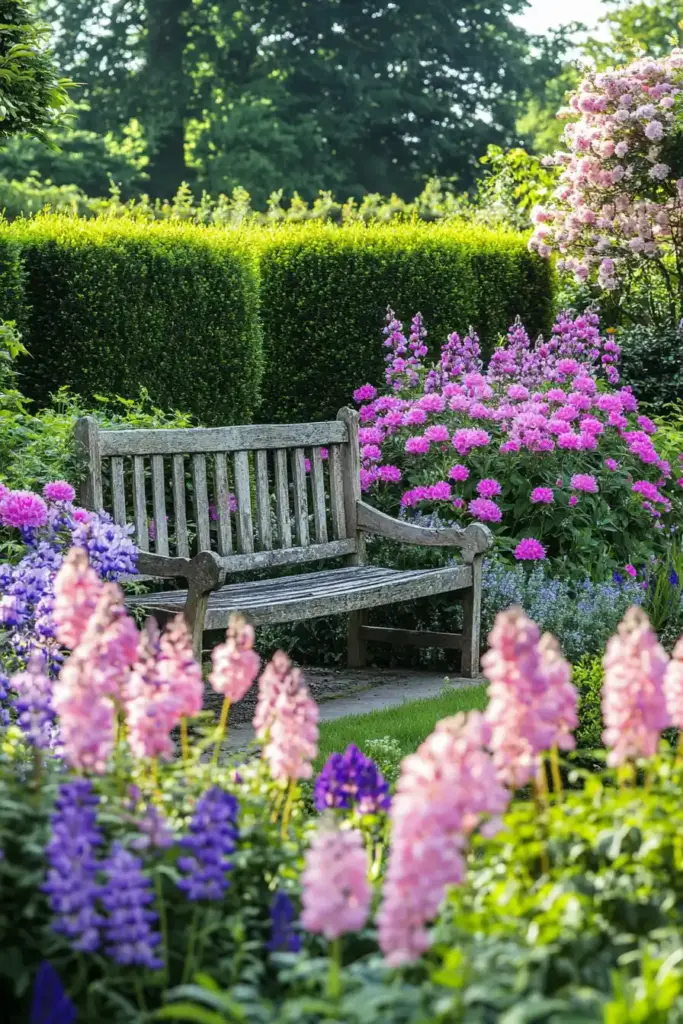
Think of pruning and deadheading as giving your rose garden a regular energy boost. Done right, it shapes your plants, encourages healthier growth, and keeps the blooms coming.
🪓 How to Prune Roses the Right Way
Pruning may sound intimidating, but it’s simple once you know the basics. Here’s your easy roadmap:
- When to Prune:
- In early spring, just as the buds begin to swell but before major leaf-out.
- Tools to Use:
- Always use sharp, clean pruning shears to make clean cuts and prevent disease.
Step-by-Step Pruning:
- Remove any dead, damaged, or diseased canes (stems).
- Cut out crossing or inward-growing stems to open up the center for better airflow.
- Make cuts at a 45-degree angle just above an outward-facing bud.
- For hybrid teas and grandifloras:
- Hard pruning encourages fewer but larger blooms.
- For shrub and floribunda roses:
- Lighter pruning keeps the natural, bushy shape.
Pruning Tip: Always cut back to healthy, white-pith tissue inside the stem for strong regrowth.
🥀 The Art of Deadheading Roses
Deadheading removes spent blooms, tricking the plant into producing even more flowers.
- Where to Cut:
- Snip just above the first 5-leaflet set on the stem.
- Frequency:
- Regular deadheading = a longer, more colorful blooming season.
🌸 Late-Season Note:
Stop deadheading in late summer or early fall to allow rose hips to form—this signals the plant to prepare for winter dormancy.
🐛 8. Managing Pests and Diseases in Your Rose Garden

Even the most beautiful rose garden can face pest attacks or disease outbreaks. But don’t worry—with a little vigilance and proactive care, you can keep your roses looking their best with minimal stress.
🐜 Common Rose Pests (and How to Beat Them)
Some insects love roses almost as much as we do. Here’s who to watch for:
- Aphids:
- Tiny green or black insects that suck sap from tender growth.
- Solution: Blast them off with a strong stream of water, apply insecticidal soap, or release ladybugs (natural predators).
- Spider Mites:
- Microscopic pests that cause stippled leaves and fine webbing, especially in dry, hot conditions.
- Solution: Increase humidity around plants, spray with neem oil or insecticidal soap.
- Japanese Beetles:
- Metallic beetles that skeletonize leaves.
- Solution: Handpick and drop them into soapy water; use traps placed away from rose beds.
🍂 Common Rose Diseases (and Prevention Tips)
Humidity and poor airflow can turn your rose haven into a fungal hotspot if you’re not careful.
- Black Spot:
- Black, circular spots on leaves leading to yellowing and drop-off.
- Prevention: Water at the base, space plants well, and remove infected leaves. Use fungicides if necessary.
- Powdery Mildew:
- White, powdery growth on leaves and buds.
- Prevention: Ensure good air circulation and treat early with sulfur-based fungicides.
- Rust:
- Orange or yellow spots, mostly on the undersides of leaves.
- Prevention: Remove affected leaves quickly and apply fungicide if needed.
🛡️ Smart Prevention Strategies
- Proper Spacing:
- Good airflow = fewer fungal issues.
- Good Garden Hygiene:
- Remove fallen leaves and dead plant material promptly.
- Base Watering:
- Keeps foliage dry and less susceptible to disease.
- Regular Inspections:
- Catch problems early when they’re easier to manage!
📅 9. Seasonal Rose Care: Year-Round Success
To keep your rose garden flourishing, it’s essential to adjust your care routine with the seasons. Each phase of the year offers different needs—and different opportunities to help your roses shine.
🌱 Spring: Wake-Up and Grow
- Prune:
- Remove any winter-damaged canes and shape your roses.
- Fertilize:
- Start feeding with a balanced rose fertilizer or compost as new growth appears.
- Inspect for pests:
- Look closely for aphids and other early visitors—treat at the first sign.
🌟 Spring Tip: A fresh layer of mulch now helps lock in moisture and block weeds before they become a problem.
☀️ Summer: Bloom Booster Time
- Water deeply and consistently:
- Especially during dry spells—don’t let your roses dry out!
- Deadhead regularly:
- Removing spent blooms encourages wave after wave of flowering.
- Fertilize every 4–6 weeks:
- Keep energy levels high for strong blooms.
🌞 Summer Tip: Water early in the morning to reduce evaporation and help prevent fungal issues.
🍁 Fall: Preparing for Rest
- Ease off deadheading:
- Let rose hips form naturally to signal the plant to wind down.
- Stop fertilizing:
- By early fall, discontinue feeding to avoid encouraging tender new growth.
- Light pruning:
- Tidy up long canes to prevent winter wind damage.
🍂 Fall Tip: Clean up any fallen leaves or debris to prevent overwintering pests and diseases.
❄️ Winter: Protect and Pause
- Mulch heavily:
- Pile mulch, straw, or leaves around the base of roses to insulate roots.
- Protect tender varieties:
- In very cold climates, cover plants with burlap or build mounded soil around the base.
- Minimal watering:
- In mild winters, occasional watering may still be necessary if there’s no rainfall.
❄️ Winter Tip: Avoid pruning heavily in winter—it can stimulate growth at the wrong time.
❓ FAQs About Creating a Rose Garden
🌸 When is the best time to plant roses?
The ideal time to plant roses is during their dormant season—late winter to early spring. This gives roots a head start before active growing begins. In milder climates, early fall planting also works well.
🌞 Are rose gardens hard to maintain?
Not really—especially with smart planning! Choosing disease-resistant varieties, spacing them properly, watering at the base, and using mulch can make rose care surprisingly low-effort.
🌱 Where do garden roses grow best?
Roses thrive in full sun (6–8 hours daily) and loamy, well-draining soil rich in organic matter. They perform best where they can breathe and soak up plenty of light.
🚫 What shouldn’t be planted near roses?
Avoid aggressive, nutrient-hogging plants like tomatoes, potatoes, or large shrubs. These competitors can attract pests and steal vital resources from your roses.
🔵 What’s the rarest rose color?
True blue roses don’t exist naturally. However, lavender or mauve roses come closest and are prized for their unique beauty.
🌹 Conclusion: Your Dream Rose Garden Awaits
Creating the perfect rose garden isn’t about perfection—it’s about passion, patience, and a little know-how. From choosing the right varieties to mastering seasonal care, you now have all the tools you need to design a stunning rose paradise that rewards you with color, fragrance, and endless joy.
Whether you’re dreaming of cascading climbers, formal rows, or a carefree cottage mix, your perfect rose garden is just a few thoughtful steps away. 🌸
Ready to get planting? Your garden masterpiece is waiting to bloom!
🌿 Love gardening inspiration? Follow me on Pinterest for bold plant ideas, tips, and seasonal color!
More Posts

